THE ROLE OF AN ARCHITECT TODAY
This research concentrates on analyzing the role of an architect today and speculation about possible directions for its evolution in the future.
In the text, it is examined, how the role of an architect has changed throughout its history and what is its current state. The research covers different historical periods starting from the ancient civilization, moving to the middle ages, to baroque, modernism, and finishing with the contemporary stage. The effect of changes in the life of the society at different periods is examined, along with the changes in the construction industry in general and on the architectural profession in particular.
The materials used for this theoretical research include books, scientific papers, facts, and statistics from websites and online publications.
The case study is based on my personal academic and professional experience and investigates how contemporary tools, technologies, and knowledge affect my role and capabilities as an architect nowadays.
Etymology.
Etymologically, the word “architect” derives from greek archi-, which means “chief” and tekton-, meaning “builder”. In the following ages, the word stayed the same, but with the increase of buildings complexity and economic growth, the meaning changed quite significantly. Currently, the English dictionary defines the word “architect” as “a person who designs buildings and advises in their construction”.
And clearly, there is a huge difference between the “chief builder” and the one who designs and oversees construction.
History.
It is not possible to start speaking about the role of an architect today without thoroughly analyzing how it changed throughout history and understanding its development along with social events affecting it.
At the time of the ancient world, when the architectural profession has just emerged, the construction and the society itself were significantly affected by religion and cult leaders, who had a huge influence on the population. The most iconic and crucial buildings erected at that time were constructed for cult purposes and included symbolic elements in their design. The localities of that time were designed as temple cities, their masterplans following the movement of celestial bodies or change of seasons. In ancient Egypt or Babylon, not only temples but entire parts of the cities were dedicated to specific gods and related cults’ servers. The power of the rulers and priests was almost absolute and architecture was used as the means of demonstrating their power, importance, and prosperity.
Since an architect was the person, responsible for the design of the city masterplan and its most important buildings, it was his job to make connections between the priest and the builders, responsible for the construction. He had to create and develop the concept, and also to find a way to implement it, making all the necessary calculations and making sure the construction goes in accordance with the initial plan. Not only this but because an architect was one of the most educated and knowledgeable people in the society, he was a very important and respected person. In ancient Egypt, an architect was a valuable advisor to the Pharaon, whose opinion meant a lot.

The Great Pyramids of Giza.
During antiquity, the architects kept their position as the mediator between the cult and the constructors. At the same time sometimes an architect was closer to the notion of a sculptor, as sculptural elements and statues became an important design element of the buildings of that time. During antiquity, the architects experiment a lot with the proportions, aerial perspective, and feelings, that a certain architectural solution or element would cause in people. Consequently, the direct supervision of an architect was crucial to make sure the final outcome follows the intended design as close as possible. Hence the architect was responsible for most aspects of the project and had to obtain knowledge from various fields. They were people of “broad learning and various talents” according to Vitruvius in his Ten Books on Architecture. (Vitruvius, Rowland and Howe, n.d.)
As the complexity of the buildings increased and the sciences such as geometry and physics were developing, the architects had to learn more things and master different tools. Partially due to this reason, the system of orders was developed, forming a kind of library of design elements, applied in various buildings, being the first set of buildings.
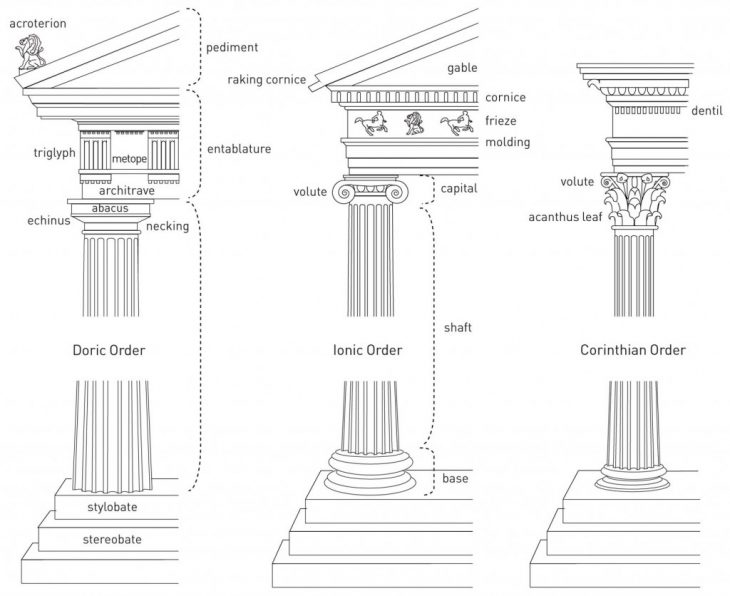
The three main Greek architectural orders.
should have been able to put together different disciplines and crafts, hence having a huge authority in the society, being a very important profession.
In the XVIII-XIX centuries, during the Baroque period, architecture was a privilege of the richest and most influential people, such as kings, nobles and major merchants. There is a high demand for the festive architecture, glorifying the prosperity and power of the client. Already existing technologies in combination with design findings of previous generations of architects allow the creation of luxurious buildings, richly decorated facades and spectacular gardens and landscape complexes. The city is treated like a palace, all the different measures are taken to demonstrate its beauty and prosperity.
As follows, an architect turns into a scenographer, a gardener and a decorator. He is always next to the rich client, especially to the ruler. Architects perform as organizers of celebrations, festivals and other large-scale events. The main design driver is the spectacularity of the project, the main evaluation criteria is the beauty and magnificence.
In the XX century the rapid development of new materials (mainly concrete and steel) and emerging technologies enables the construction of new buildings of increasing complexity at unprecedented speed. The capitalism and the Second industrial revolution are the main drivers of the construction industry at that point. Once again architecture was a matter of promoting ideologies, and increasing technological capacities gave architects unprecedented design freedom for this.
This was the moment when architects became more like engineers, as it was crucial for them to be aware of how new materials perform and to what extent can they push the things, thought to be impossible a couple decades ago.
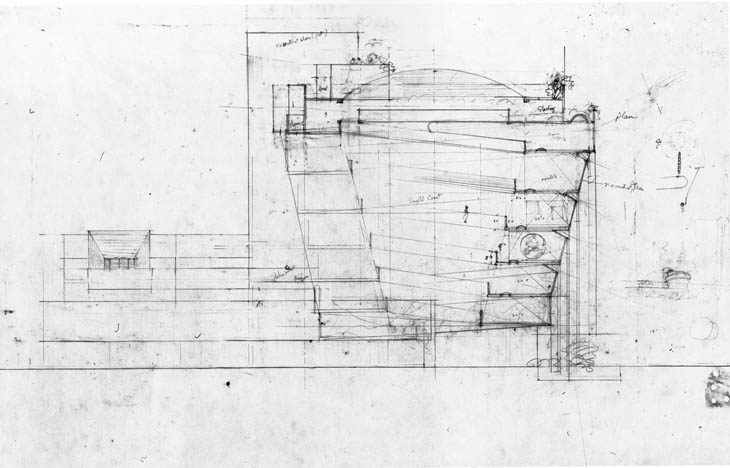
Guggenheim museum section. Architect – Frank Lloyd Wright.
Nevertheless, an architect was still depending a lot on the will of the client, in a way being his server. No matter how brave or good the design, it was going to stay on paper, unless the person paying the master was completely convinced by the design and willing to pay for its certain aspects. Based on a dubious but not a pointless statement, that some fortunes are made not in a fair way, an architect had to address the dilemma of getting paid well or keeping his reputation flawless. At this point of bifurcation, an architect had to make a choice between being a collaborator or an intellectual, between actually building his designs or keeping them as just a concept forever.
Besides the moral side, at this point, an architect had to make a choice about the more narrow specialization, as the increasing technological complexity and the amount of accumulated knowledge lead to the necessity of distributing various parts of the project to specialists from different fields.
By the end of XX century, it was quite a common thing, that an architect, officially being named the author of the project, had less influence on the final result, than the quantity surveyor. This lead to a case, when an architect spent long years studying and mastering the skills but ended up struggling to make a decent profit off of this.
Current state.
“The contemporary Architect can be described as being an individual conceived from ideals of the 18th century, operating in a profession designed in the 19th century, within construction processes formulated in the 20th century attempting to meet the needs of the 21st century.”(Butcher, 2011)
In anticipation of the impending environmental crisis and growing demand on affordable housing, the image of a so-called “starchitect” as an almost almighty demiurge and genius, ruling the machines and shaping the future of cities and communities, rapidly faded away. At the time of rising digital technologies, as well as of numerous crises, architects have to search for other ways of regaining their power and influence through redefining and better understanding their role in the contemporary world.
Although the existing tools today are better than at any time in history, the competition today is also as high as never before. High-qualified architects are ready to work almost for nothing, in order to beat their contestants, resigned to the need of constant learning and improvement of their skills.
Therefore, an architect should either find a very narrow specialization or learn to be extremely convincing and develop a broad knowledge, in order to mediate construction specialists from different fields appropriately.
The emerging technologies, such as generative design and parametric optimization present new requirements to an architect, making her/him perform more as a programmer or a coder.
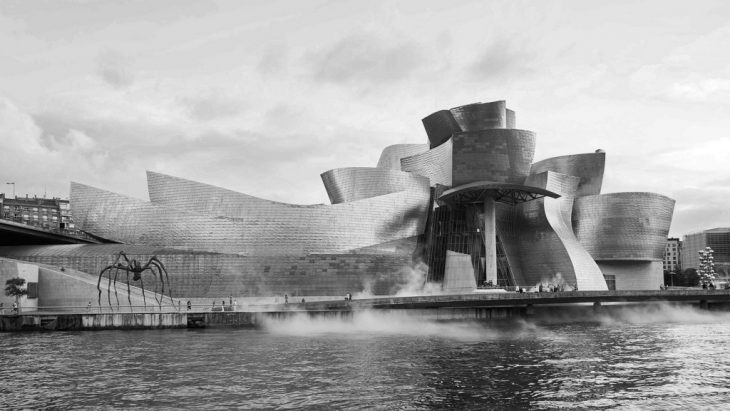
Guggenheim museum. Architect – Frank Gehry.
Personal perspective.
During my academic and professional career as an architect, I tried myself in different roles and parts of the architectural process. However, coming to IAAC made me rethink completely my approach to the profession.
Nowadays there is no need for thousands of highly-intellectual masterminds, designing large-scale concepts. At the same time, there is a high demand for sustainable, economical and ecological buildings. Buildings’ complexity seems to have reached its limit, therefore it is still very important for an architect to be a mediator between different contractors and clients. However, the advancements in software and design tools actually allow me to take care of different design aspects myself, as well as to have more impact on the final construction outcome.
Contemporary computational tools, such as evolutionary solvers and machine learning allow me not only to evaluate relevant building properties at the preliminary design stage but also to optimize its performance and fulfill predefined parameters. In addition to being a mediator today, I have to become a programmer.
But in order to develop well-informed computational designs I have to thoroughly understand which factors affect them, I have to learn a lot about materials and their life cycle. I come back to the practices of the old masters, working with materials, fabrication, conducting tests, and experiments.
In IAAC I am working on developing my custom computational and fabrication tools, enabling me not only to understand if my idea is achievable or makes sense at all but also to find a way to achieve my goals. This is definitely not possible without a comprehensive approach to design and deep investigation of the topic.
Today I may claim that learning about materials and such things as parametric optimization and digital fabrication not only allows me to work faster, but also to produce designs of a higher quality. I personally treat them as a valid addition to my own skills, as a tool, allowing me to improve my productivity.
The aforementioned benefits and findings give me hope that one day architects will be able to regain their influence on the construction industry and the way we live. Once again, as long ago architects will keep the knowledge about the science materials and nature itself. And – who knows – this might transform us into a mediator between the people and the biosphere?
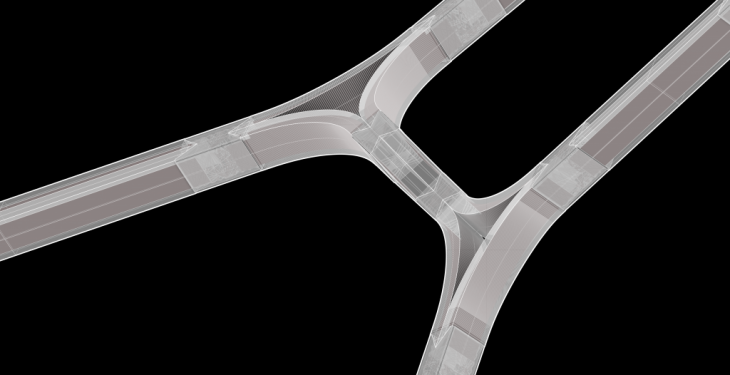
Glulam structure 3d-model.
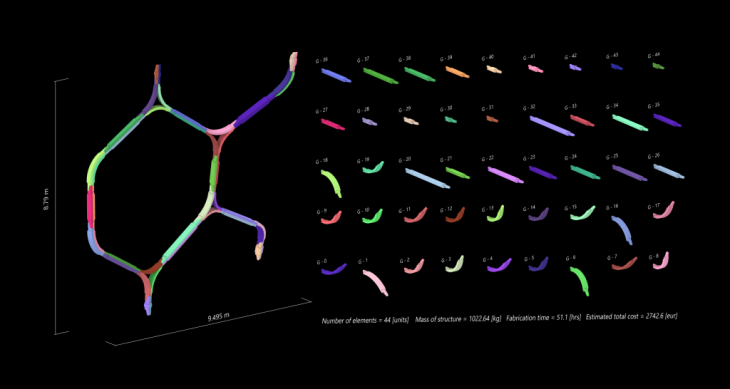
Building integration modeling integration.
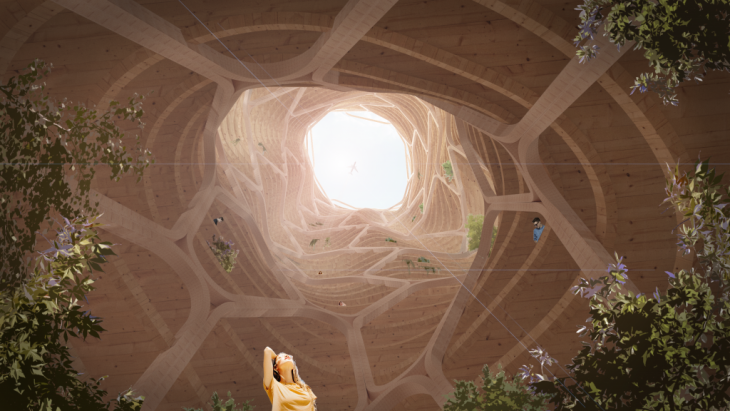
Architectural proposal.
Seminar: Theory & Knowledge 2019/2020
Student: Ivan Marchuk
Faculty: Manuel Gausa, Jordi Vivaldi Piera.